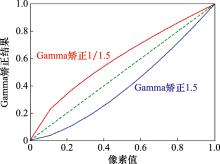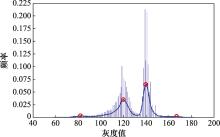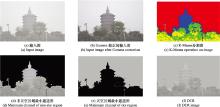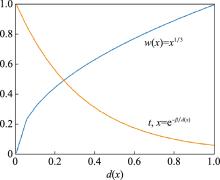| 1 |
李晓聪. 图像去雾与增强技术的研究与应用[D]. 济南: 齐鲁工业大学, 2019.
|
|
LI X C. Research and application of image defogging and enhancement technology[D]. Jinan: Qilu University of Technology, 2019.
|
| 2 |
易礼智. 雾霾环境下图像清晰化处理研究与应用[J]. 电脑与电信, 2019, 4 (2): 1- 4.
|
|
YI L Z . Research and application of image clarity processing in haze environment[J]. Computer & Telecommunication, 2019, 4 (2): 1- 4.
|
| 3 |
QU Y F , ZOU Z F . Non-sky polarization-based dehazing algorithm for non-specular objects using polarization difference and global scene feature[J]. Optics Express, 2017, 25 (21): 25004- 25022.
doi: 10.1364/OE.25.025004
|
| 4 |
CAI B L , XU X M , JIA K , et al. Dehazenet: an end-to-end system for single image haze removal[J]. IEEE Trans.on Image Processing, 2016, 25 (11): 5187- 5198.
doi: 10.1109/TIP.2016.2598681
|
| 5 |
TAN R T. Visibility in bad weather from a single image[C]//Proc. of the IEEE 26th Conference on Computer Vision and Pattern Recognition, 2008.
|
| 6 |
杨燕, 陈高科, 周杰. 基于高斯权重衰减的迭代优化去雾算法[J]. 自动化学报, 2019, 45 (4): 819- 828.
|
|
YANG Y , CHEN G K , ZHOU J . Iterative optimization defogging algorithm using Gaussian weight decay[J]. Acta Automatica Sinica, 2019, 45 (4): 819- 828.
|
| 7 |
杨燕, 陈高科. 基于光补偿和逐像素透射率的图像复原算法[J]. 通信学报, 2017, 38 (5): 48- 56.
|
|
YANG Y , CHEN G K . Single image visibility restoration using optical compensation and pixel-by-pixel transmission estimation[J]. Journal on Communications, 2017, 38 (5): 48- 56.
|
| 8 |
FATTAL R . Single image dehazing[J]. ACM Transactions on Graphics, 2008, 27 (3): 547- 555.
|
| 9 |
TAREL J P, HAUTIÉRE N. Fast visibility restoration from a single color or gray level image[C]//Proc. of the IEEE 12th International Conference on Computer Vision, 2009.
|
| 10 |
ZHU Q S , MAI J M , SHAO L . A fast single image haze removal algorithm using color attenuation prior[J]. IEEE Trans.on Image Processing, 2015, 24 (11): 3522- 3533.
doi: 10.1109/TIP.2015.2446191
|
| 11 |
HE K M , SUN J , TANG X O . Single image haze removal using dark channel prior[J]. IEEE Trans. on Pattern Analysis & Machine Intelligence, 2011, 33 (12): 2341- 2353.
|
| 12 |
MCCARTNRY E J . Optics of the atmosphere: scattering by mole-cules and particles[M]. New York: John Wiley and Sons, 1976: 421- 421.
|
| 13 |
YUCHENG Z M, SALMAN A. Image and depth estimation with mask-based lensless cameras[C]//Proc. of the IEEE 8th International Workshop on Computational Advances in Multi-Sensor Adaptive Processing, 2019.
|
| 14 |
HE K M , SUN J , TANG X O . Guided image filtering[J]. IEEE Trans. on Pattern Analysis & Machine Intelligence, 2013, 35 (6): 1397- 1409.
|
| 15 |
HE K M, SUN J. Fast guided filter[EB/OL]. [2015-05-05]. https://arxiv.org/abs/1505.00996v1.
|
| 16 |
GUO Y F , ZHANG Z S , YUAN H F , et al. Single remote-sensing image dehazing in HSI color space[J]. The Journal of the Korean Physical Society, 2019, 74 (8): 779- 784.
doi: 10.3938/jkps.74.779
|
| 17 |
XU Y S, GUO X Q, WANG H Y, et al. Single image haze removal using light and dark channel prior[C]//Proc. of the IEEE 4th International Conference on Communications in China, 2016: 323-328.
|
| 18 |
XU Y , WEN J , FEI L K , et al. Review of video and image defogging algorithms and related studies on image restoration and enhancement[J]. IEEE Access, 2017, 4 (1): 165- 188.
|














